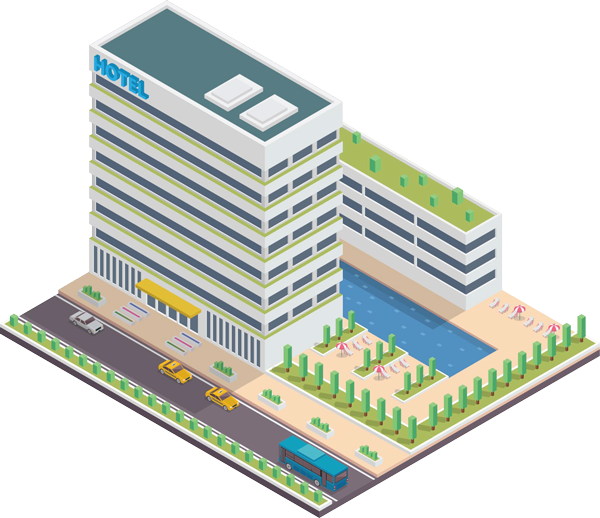Utility Wait List
More and more hotels and hospitality businesses are realizing the benefits of installing electric vehicle (EV) chargers for guests and avoiding utility wait list. Clearly, the number of EV drivers is increasing. And travelers are looking to patronize businesses that offer them EV charging.
Are you ready for the influx of EVs? Do you have a rollout strategy? Where do you start? EV charger installation is a complex process that extends beyond the question of how much EV chargers cost.
And as the popularity of EVs increases, companies who wish to install EV chargers are competing for resources. These resources include not only the limited pool of financial incentives available but also the finite amount of electricity to power the infrastructure that supports EV charging.
How do the utilities prioritize the companies they serve? Generally, they treat requests on a first-come, first-served basis. That’s why it’s urgent to get on the utility wait list now to get ahead of your future power needs.
Future Energy has helped thousands of businesses streamline the process of obtaining the required power for EV charging as part of a long-term strategy. We align the stakeholders and help you prepare for the utility’s requirements well in advance, helping to move our clients to the top of the utility wait list.

Starting Your EV Charging Plan with the End in Mind
The process of upgrading your electrical infrastructure could take years. If you start your EV charging project by assessing only your immediate power needs, you will already be behind.
Asking the Right Questions
Instead of thinking of EV charging in a larger strategic context, too many businesses begin by asking the wrong types of questions:
- How many chargers do we need now?
- How much do they cost?
- How soon can you install them?
Rather than rush to immediate solutions, Future Energy encourages our clients to start with the end goal in mind. The EV charging landscape is changing. Short-term investment without consideration of future needs results in unnecessary business risk. You want to set your business up for success in the long term.
Understanding EV Charging Needs
There are two types of EV chargers appropriate for commercial use.
Level 2 chargers require a 240-volt source of power, similar to that required by a heavy-duty appliance. Level 2 chargers provide up to 19.2 kW of AC power at the top of their range and charge an EV at about 40 miles per hour. A hotel typically would provide level 2 charging for guests who leave their vehicles overnight.
By contrast, a level 3 charger is a direct-current fast charger and can fill an EV in about a half hour. Level 3 chargers run off 480-volt three-phase power, typically found at an industrial plant. Hotels that wish to offer fast charging to guests almost certainly will require an electrical upgrade to the proper infrastructure.
Performing an EV Impact Study Across Your Enterprise
Future Energy has worked with thousands of businesses to analyze how EV charging fits with their business goals. We offer our clients a customized EV Impact Study, which they use at an enterprise level as well as for individual franchises.
A hotel franchise owner in multiple municipalities doesn’t have to start from scratch for each property that plans to install EV chargers. Instead, Future Energy’s EV Impact Study provides a blueprint that conforms to each specific use case.
The overarching concepts form a backbone for a site-specific plan for each of your locations so that you can implement EV charging at scale.
Aligning the Stakeholders to Facilitate EV Charging
Support for power consumption is a complex process that involves the alignment of many stakeholders. These stakeholders include operations personnel, business leaders, the local utility, and municipalities.
As your EV charging consultant, Future Energy helps line up the stakeholders you need so that your project runs smoothly.
Recognizing Power Needs on Your Property
Future Energy’s engineering team performs an on-site evaluation of the kilowatts (kW) and amps you currently have available. Hotels and motels in the US average 14 kilowatt-hours (kWh) of electricity use per square foot every year, primarily for lighting, heating and cooling, and office equipment.
A level 2 EV charger tops out around 19.2 kW and charges at about 40 miles per hour. Assuming it takes about eight hours to fully charge an EV, each vehicle would draw about 154 kWh of power. To fully charge 27 EVs would equal the yearly electrical draw of one hotel room on average.
In short, it’s important to have a plan for your property’s power requirements. Otherwise, you will lack the power you need to satisfy your guests’ EV charging requirements and end up with an unpleasant surprise in your electric bill.
Planning Upgrades to Your Electrical Hardware
The utility wait list time from request to actual installation of electrical infrastructure varies widely by location. For example, some busy metropolitan areas could take two years just for the utility to consider your upgrade request.
Identifying Utility Infrastructure Needs
Future Energy has relationships with the largest utility companies across North America. As a result, we facilitate your ability to get to the front of the utility wait list. We know what the utility companies are looking for and how to prepare our clients to meet the utility’s requirements.
Solidifying the EV Charging Plan
Electric companies seek to be as efficient as possible in their operations. They try to avoid bottlenecks involved in the processing of upgrades.
Companies that don’t have their paperwork properly completed and permits organized can slip to the back of the utility wait list. Utilities prioritize companies that are prepared.
So that you don’t have to get in line to work with the utility directly, Future Energy takes care of these time-consuming preliminary steps:
- Load assessment
- Line drawings
- Municipality approval
Load Assessment
Any EV charging project involves working with the local utility to ensure your electrical infrastructure can support your plan. The utility’s load planner will examine your electrical systems to determine the upgrades required.
Future Energy’s infrastructure manager works with the load planner to look at your project in the context of other upgrade requests. Your competitors’ plans and other utility demands could have an effect on your strategy.
Electrical Drawings
The utility is going to ask for your project’s line drawing before it approves any plans to upgrade. A line drawing is a high-level schematic diagram that demonstrates how incoming power is distributed to equipment. Future Energy engineers take care of drawing up this requirement. Without it, the utility can bump you to the back of the utility wait list.
Municipality Approval
Do you own multiple properties in various jurisdictions? Each local entity has its own requirements for granting permits for electrical projects. Future Energy works with your local government to obtain the requisite permissions. Otherwise, the utility will not proceed with your project.
Finding Guidance on Implementing EV Charging Solutions
Don’t wait to get to the top of the utility wait list. Contact Future Energy today to find out how our subject matter experts help you prepare to integrate EV charging into your business plan.
